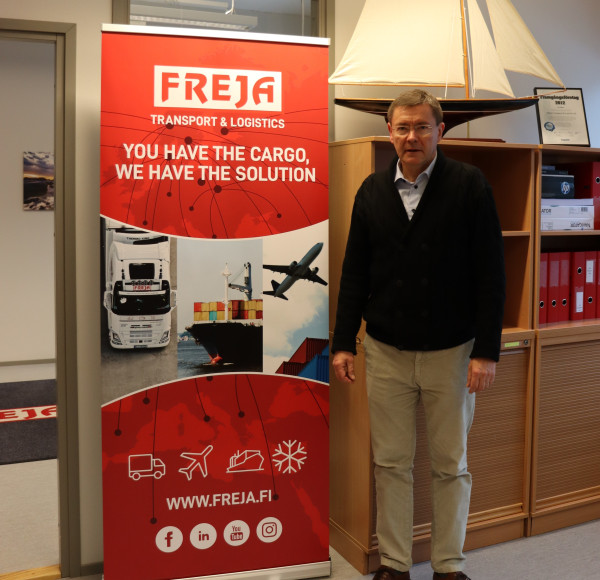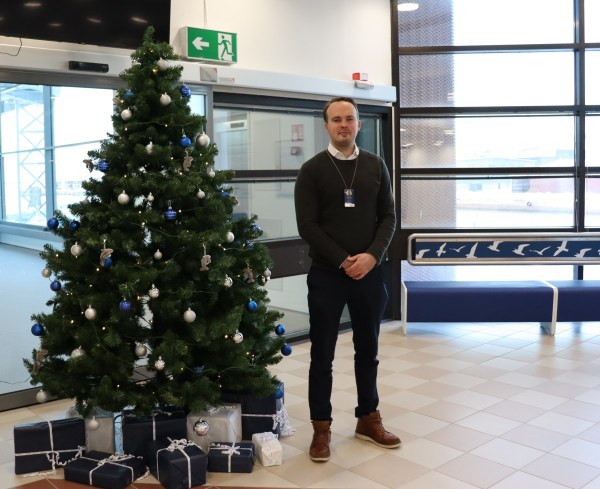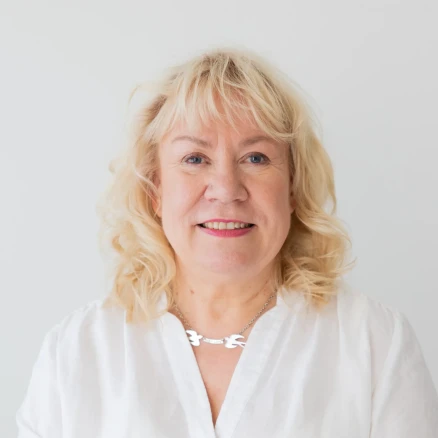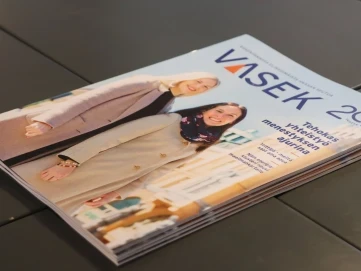Cooperation Between Companies in the Vaasa Region Marks the Beginning of a Major Logistics Change
The winds of change have been blowing regarding the increased importance of green logistics for a while. In Vaasa, it is possible to achieve both cost and environmental benefits thanks to the cooperation between companies in the economic region.
 FREJA’s CEO Matti Urmas
FREJA’s CEO Matti Urmas
The winds of change have been blowing regarding the increased importance of green logistics for a while. In Vaasa, it is possible to achieve both cost and environmental benefits thanks to the cooperation between companies in the economic region. The concrete results can now be seen. This cooperation may indeed be the beginning of a major logistics change benefiting all areas transporting goods to Europe through the Gulf of Bothnia.
– The region has been working for sustainable transport solutions for a long time. An example of this is the logistics chain created for the Vaasa—Umeå—Kiel route despite the exceptional situation in the world, which is good news, says Riitta Björkenheim, Logistics Expert at Vaasa Region Development Company VASEK.
Companies that have been involved in developing this new connection include Wärtsilä and Wasaline, the company transporting freight between Vaasa and Umeå, as well as FREJA transport & logistics, a freight forwarder using its international network in trailer transport.
A Truly Cost-Effective and Sustainable Option
The logistics industry has faced challenges over the past two years, having been forced to reroute cargo flows, particularly at sea transport due to COVID-19 as well as shipping companies. According to FREJA’s CEO Matti Urmas, the new route from Vaasa to northern Germany is an excellent and efficient option for all companies in the Ostrobothnia economic region. However, it will take time to change the route of cargo flows.
– Our key objective has been to transport cargo from Central Europe directly to Vaasa port. This solution allows the transport chain to be optimised in cargo handling, affecting the flow of both import and export goods. When importing, the goods can be shipped as close to the end customer as possible, and when exporting, they can be sent directly from Vaasa port into Europe. In the Vaasa region, there is an apparent demand for just that, Urmas says.
In Wärtsilä, it is considered very important that the new connection to Kiel is maintained.
Mikael Lindberg, Development Manager responsible for logistics at Wärtsilä, hopes that, based on the good experience, other companies would also notice the advantages of the route and start benefiting from it in the same way as Wärtsilä.
Wärtsilä has paid attention to green transport practices ever since it committed to becoming carbon neutral by 2030.
– This route is also part of the journey towards that goal. Maritime transport is the most environmentally friendly option, and the shorter the routes are or the more efficiently the cargo is transported, the more emissions are reduced. One should think about green values and optimisation all the time when developing something new. It is a challenge everyone should deal with and participate in; every company that is at least in some respect international, selling abroad to more prominent companies, pay attention to green values, Lindberg notes.
– In practice, the costs are the same. Lower emissions are what we gain in this. I believe that it is as good as saving as anything else.
Wasaline confirms the same thing.
Today it means a lot for the industry to reduce its carbon footprint. A lot has happened, especially over the last year. Large companies, in particular, have noted that the most important question of this decade will be how to reduce emissions, says Tony Ehrs, Director of Cargo at Wasaline.
 Tony Ehrs, Director of Cargo at Wasaline
Tony Ehrs, Director of Cargo at Wasaline
The Potential Is There
Wasaline's freight volumes have grown along with the added number of departures, reducing dwell times at the port. Customers can also be offered capacity throughout the year. In addition, the new ship can carry special shipments and hazardous materials. Ehrs points out that the sea journey across the Kvarken takes three and a half hours at best, which is a clear advantage over the day departures in southern Finland.
According to Ehrs, Vaasa and Umeå are lucky to have a rail connection to both ports. The freight can be forwarded without a driver on either side of the Kvarken. It is a strength in the future, as driver numbers, according to forecasts, will decrease.
Ehrs mentions that, from the point of view of companies, the sea route from Vaasa to continental Europe has great potential because more departures between Kiel and Umeå may become a reality if there is enough interest to increase capacity profitably. Kiel has an excellent geographical location regarding transport from the continent northwards and vice versa.
Working Together Towards a Sustainable and Optimised Logistics Chain
Lindberg at Wärtsilä believes that corporate ecosystems are essential when an international company plans to commit to Vaasa.
– It is good to see that the city of Vaasa ensures a good operational environment for us in the region. For example, creating the operational environment for the GigaVaasa project will help develop both the port of Vaasa and the entire Vaasa economic region.
Urmas believes it is essential for the economic region to cooperate actively.
– Maintaining a regular marine transportation service from Middle Europe directly to the port of Vaasa requires strong cooperation; no one can do it on their own, not an individual customer, not a freight forwarder, nor a shipping company, Urmas says.
All parties note that shipping via Vaasa port is a real option not only for the companies in Vaasa economic region, but also for a larger area. It pays to look at the economic region as a relatively large geographical area. As an example, Lindberg explains: the same trailer that comes to Vaasa goes back to Europe from Pietarsaari. Transportation of the trailer or container to the port becomes significantly shorter with this concept. In other words, the route serves a large geographical area in Finland.
– In Ostrobothnia, companies have always had the principle of favouring local partners and cooperating with them. Therefore, we are pleased that cooperation with Wärtsilä has started, and I believe there is even more potential in the region, Ehrs sums up.
Therefore, cooperation could mark the beginning of a more comprehensive logistics change for a wider area.

